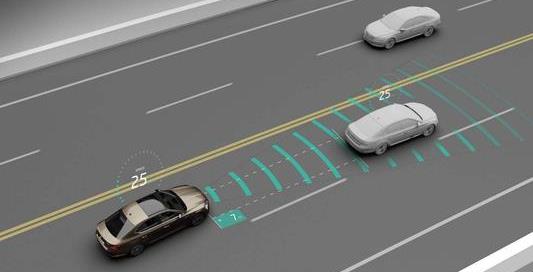ADAS advanced driver assistance calibration equipmentVarious functions
1. Parking assistance system
ADAS's parking system has benefited many novices who don't know how to park. Parking assistance systems are divided into two types: active and passive. The former system automatically controls the steering wheel to help the driver complete parking. Of course, the accelerator, brake and gear shift still need to be controlled by the owner. The latter consists of image (camera) and video (ultrasonic) sensor units, providing more information about the vehicle's surroundings to the owner and reducing the chance of collision.
2. Lane Departure Warning System LDW
The system consists of a camera, a sensor and a controller. The principle is to use a camera or a nearby car rearview mirror to sample lane markings, and then obtain the current position in the lane through image processing. As long as the car deviates from the lane, the controller will send out an alarm signal. It takes about 0.5 seconds from the sensor to the alarm, providing real-time warning to avoid accidents.
3. Blind spot detection system
The blind spot of a car driver refers to the invisible areas on the three sides of the rearview mirror, the left side, the right side, and the inside. I believe many drivers have a deep impression of blind spots, and it is also one of the most common accidents. The blind spot detection system uses radar and sensors to detect the blind spot behind the vehicle. When the blind spot detects a vehicle approaching, the driver will receive an alarm to help the driver minimize the probability of an accident.
4. Night vision system
It can help drivers automatically identify animals or large foreign objects at night when vision is unclear or weather is bad, and warn drivers of road conditions ahead to avoid accidents. The identification method uses infrared rays to sense thermal differences and distinguish between people, animals, vehicles and the environment. After processing, the image is transformed to clearly present previously invisible objects to the driver, thereby reducing driving risks.

Related News
- How does the dynamic four wheel aligner avoid communication interference?
- Introduction to vehicle electrical inspection
- How to choose a good pass four wheel aligner
- What is the assembly line
- The important role of the through four wheel aligner
- The four main points of 3D laser four wheel aligner maintenance
- Working principle of electric chassis dynamometer
- Vehicle off-line comprehensive diagnostic equipment
- How to choose a good dynamic four wheel aligner
- Precautions for selecting a non-contact four-wheel aligner
- Briefly talk about the main tasks of the comprehensive diagnostic equipment for vehicle off-line
- What are the obvious features of the comprehensive diagnostic equipment for vehicle off-line?
- The core of ADAS advanced driver assistance calibration equipment is the camera
- Don't underestimate the high-speed ABS brake test bench
- Development module for ADAS advanced driver assistance calibration equipment
- How to maintain ABS brake system to prevent failure
- How to choose a non-contact 4-wheel aligner
- The structure of non-contact 4-wheel alignment instrument
- What are the characteristics of DSP technology of 3D laser 4 wheel alignment?
- The Excellence of 3D Laser 4 Wheel Alignment
